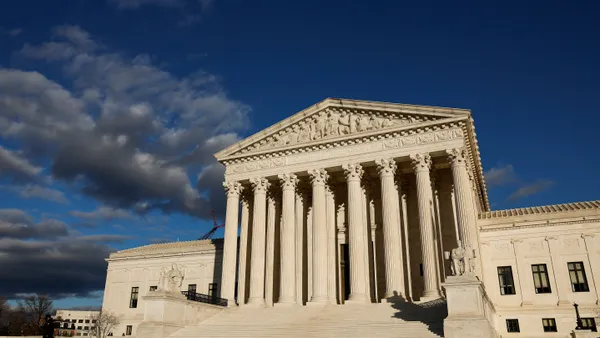As the school year approached, more low-income families reported using dollars from the expanded child tax credit payments to fund education-related expenses like books and other supplies, tuition, after-school programs, tutoring services, and transportation to school, according to the Center on Budget and Policy Priorities.
Between July and August, an estimated 31% of adults with children and household income below $25,000 spent their funds on education expenses. In September, 40% of families making below $35,000 did the same, the most recent analysis released by the organization shows. Other major expenses families covered with the payments included food, utility costs, clothing, and rent or mortgage.
The sample sizes "did change a little," Arloc Sherman, the organization's vice president for data analysis and research, said in an email, "but do not appear to have changed enough to explain the statistically significant jump in families reporting spending on school costs at the end of August and beginning of September."
The numbers "show a strong seasonal 'back-to-school pattern," Arloc said. "The number of parents and other caregivers spending [child tax credits] on school books and supplies jumped from 8 million in late July to 15 million in late August, then receded to 8 million again by early October," he added.
The child tax credit was expanded under the American Rescue Plan passed in March 2021 so families receive an increased monthly payment for each child, ranging from $250 to $300 a month, based on family income and child age.
The CBPP is pushing for the credit to remain expanded long-term, saying it has a greater impact on families with children than the previous payments.
Even prior to the pandemic, 16%, or 11.6 million, of children under 18 belonged to families living in poverty, according to national data from 2019. While that's a decrease from 2010, when that percentage was at 21%, approximately 74.7 million people, largely in low-wage jobs, have lost work since the start of the COVID-19 pandemic, according to Human Rights Watch.
As a result, the pandemic has taken a toll not only on students' academic progress nationwide, but on their home and family life as well.
More students, especially traditionally marginalized populations, report feeling stressed, anxious and depressed, among other mental health problems, as parents struggled to balance — and in some cases find — work during shutdowns. The homeless student population is also suspected to have grown despite being underreported during school closures and intermittent reopenings.
As a result, districts have had to step in to connect families with everything from temporary housing to food and mental health services. Many say the role of schools during the pandemic is not a new one — rather just a reinforcement of the community school model's importance.
“The whole [community schools] system is designed to deal with this type of crisis,” explained José Muñoz, director of Coalition for Community Schools network, a project of the Institute for Educational Leadership, shortly after nationwide closures in April 2020.
However, government priorities haven't always followed suit, and some advocates were skeptical about the probability of expanding the community school model in the wake of budget cuts. Despite those setbacks, though, California Gov. Gavin Newsom committed to the expansion of the community school model this past summer, making the state among few prioritizing the "whole child."
Previously, district homeless student liaisons voiced concerns about a lack of leadership and resources to properly do their jobs and support the homeless student population. An early survey conducted by SchoolHouse Connection, a nonprofit organization, showed few states prioritized homeless students in spending their first round of federal funds provided by the Coronavirus Aid, Relief and Economic Security Act.
The Center on Reinventing Public Education found a similar story: Out of 100 districts, including 30 of the largest districts in the country and at least one district from unrepresented states, only 17 announced intentions to support unhoused students in their fall 2020 reopening plans.
CBPP, which has been tracking how families have spent the increased child tax credit payments since their inception, believes, "Congress should make it a top priority to ensure that the full credit remains permanently available to children in families with the lowest incomes, a measure that in percentage terms drives nearly 90% of the expansion’s anti-poverty impact."
The expanded program expires at the end of 2021, and its renewal is part of the Build Back Better Plan currently being debated by Congress.







 Dive Awards
Dive Awards











